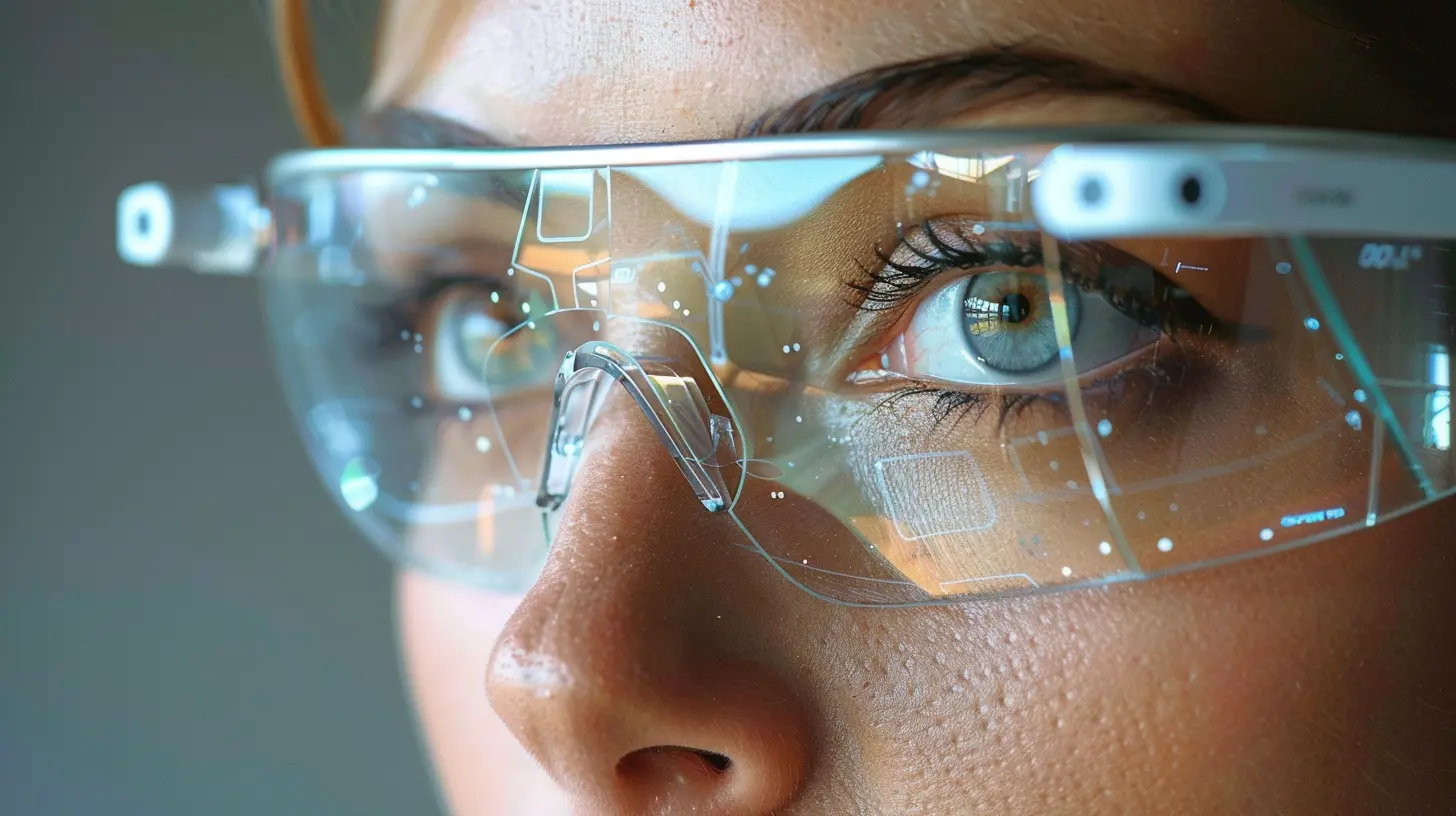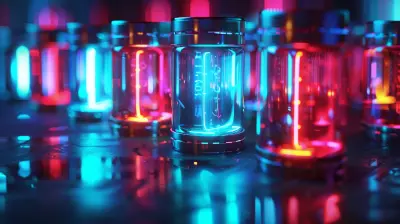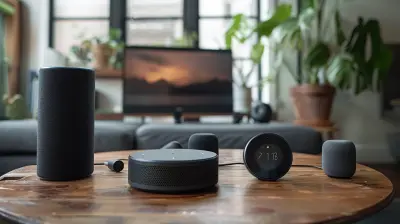The Push Toward Transparent Gadgets: A Glimpse into the Future
29 May 2025
Technology is evolving at a breakneck pace, and with every passing year, we’re seeing innovations that once belonged in sci-fi movies become reality. One such fascinating development? Transparent gadgets.
Imagine pulling out a smartphone that looks like a piece of glass when turned off or using a laptop where the screen appears to float in mid-air. Sounds like something out of a futuristic movie, right? Well, the tech industry is steadily moving toward making these transparent devices a mainstream reality.
But why the push toward transparency? Is this just another gimmick, or could it change the way we interact with our devices forever? Let’s dive deep into this emerging trend and dissect the technology, challenges, and potential future of transparent gadgets. 
The Evolution of Transparent Technology
Transparent gadgets aren't a completely new idea. The concept has been around for decades, appearing in concept designs, patents, and even experimental products.- Early Concepts in Movies and Sci-Fi – Transparent technology has always been a sci-fi staple. Think of Tony Stark’s floating computer screens in Iron Man or the glass-like tablets in Minority Report. These depictions have long inspired tech companies to turn fiction into reality.
- First Attempts by Tech Giants – Companies like Sony, Samsung, and LG have dabbled in transparency. From Sony’s transparent Walkman in the early 80s to Samsung’s experimental see-through displays, manufacturers have toyed with the concept for years.
- Modern-Day Innovations – With advancements in OLED and micro-LED displays, we’re seeing functional prototypes of transparent smartphones, TVs, and even smart glasses. The technology has finally begun to shift from concept to consumer reality. 
The Science Behind Transparent Gadgets
So, how do these see-through gadgets actually work? It’s not magic—it’s cutting-edge engineering!1. OLED and Micro-LED Displays
Most transparent screens rely on Organic Light-Emitting Diode (OLED) or Micro-LED technology. Unlike LCDs, which require a backlight to function, OLEDs produce their own light. This allows manufacturers to structure displays with transparent components, making sections of the device seem almost invisible when turned off.2. Transparent Circuitry
Standard circuit boards are solid and opaque, which obviously wouldn’t work for a see-through device. The solution? Graphene and nanowires. These advanced materials allow for flexible, transparent circuits that can transmit signals without the need for bulky, visible wiring.3. See-Through Batteries
One of the biggest roadblocks to truly transparent gadgets is the battery. Traditional lithium-ion batteries aren’t see-through, but researchers are developing thin-film transparent batteries that use specialized electrolytes to store and distribute energy while remaining virtually invisible.4. Augmented Reality (AR) Integration
Transparent devices may also pave the way for the next step in AR. Imagine wearing smart glasses that display real-time digital information without obstructing your view. This integration could revolutionize industries like healthcare, gaming, and navigation.
What’s Driving the Push Toward Transparency?
You might be wondering—why do we need transparent gadgets? Well, beyond the "cool factor," there are some solid reasons why tech companies are investing in this innovation.1. Aesthetic Appeal
Let’s be real—transparent tech just looks futuristic. In an era where design plays a crucial role in product success, companies want to push boundaries with sleek, minimalist designs. A transparent smartphone or laptop could become the next premium must-have.2. Improved User Experience
Imagine a car windshield that doubles as a dashboard, displaying navigation, speed, and weather updates while keeping your view clear. Transparent technology can enhance usability by merging digital interfaces with the real world in a seamless fashion.3. Space Efficiency
With devices becoming more compact, integrating transparent screens into everyday objects could save space. Think of refrigerators with built-in displays or windows that double as information panels. The possibilities are endless.4. Advancements in AR and VR
Transparent displays are a game-changer for augmented reality. Instead of clunky headsets, we could have sleek, lightweight smart glasses that seamlessly blend digital content with reality. This could redefine how we interact with technology on a daily basis.
The Challenges Holding Back Transparent Gadgets
Of course, it’s not all smooth sailing. Despite the excitement, several hurdles are preventing transparent gadgets from becoming widespread.1. Durability Concerns
The biggest question mark? How strong are these devices? Traditional smartphones already suffer from cracked screens, so making devices even thinner and more fragile raises durability concerns. Engineers will need to develop ultra-strong materials to prevent breakage.2. Battery Limitations
As mentioned earlier, the battery is a major challenge. Transparent batteries are still in early development stages and don’t yet offer the same efficiency as traditional lithium-ion cells. Until this hurdle is overcome, fully transparent devices remain impractical.3. Higher Manufacturing Costs
Building a see-through device requires specialized materials and production techniques, which naturally increases costs. Until mass production methods improve, transparent technology may remain a luxury item rather than a mainstream trend.4. Privacy Issues
Ironically, transparency can bring privacy concerns. If a device is partially see-through, could someone else see what’s displayed on your screen? This could be an issue for sensitive tasks like banking or private conversations.5. Limited Market Readiness
Even if the tech is ready, are consumers? Many people may find transparent gadgets gimmicky or unnecessary. Widespread adoption depends on whether companies can sell the real benefits beyond just aesthetics.What’s Next for Transparent Tech?
Despite the challenges, the future of transparent gadgets looks promising. Tech giants and startups alike are continuing to push boundaries, experimenting with new materials and refining the technology.- Samsung and LG have already showcased transparent TVs and smartphone prototypes. As costs come down, we may see mass adoption.
- Apple and Google have invested in AR-driven transparent displays, aiming to revolutionize smart glasses.
- Researchers are working on flexible, transparent batteries to overcome current power limitations.
The next decade could see transparent gadgets becoming part of everyday life, from smartphones and TVs to cars and wearable tech.
Final Thoughts
Transparent gadgets bring us one step closer to the futuristic world we’ve always imagined. While challenges remain, the potential applications are too exciting to ignore. Whether it’s a stylish smartphone, an AR-powered windshield, or an invisible smartwatch, one thing is clear—the future is transparent.The real question is: Are we ready for it?
all images in this post were generated using AI tools
Category:
Tech TrendsAuthor:

Reese McQuillan
Discussion
rate this article
3 comments
Zinnia Ford
This article brilliantly highlights the emerging trend of transparent gadgets, emphasizing their potential to enhance user interaction and design aesthetics. Exciting innovations ahead promise to redefine our tech experiences!
June 18, 2025 at 2:44 AM

Reese McQuillan
Thank you for your insightful comment! I'm glad you found the potential of transparent gadgets exciting. They truly have the power to transform our tech experiences!
Liora McAdams
Embrace transparency in tech—it's the key to innovation and trust in our future!
June 1, 2025 at 3:15 AM

Reese McQuillan
Absolutely! Transparency fosters accountability and inspires creativity, paving the way for a more trustworthy tech landscape.
Heather Reed
Exciting times ahead—transparency in tech fosters trust!
May 30, 2025 at 12:58 PM

Reese McQuillan
Thank you! Transparency is indeed key to building trust and ensuring a brighter future for tech innovation.



